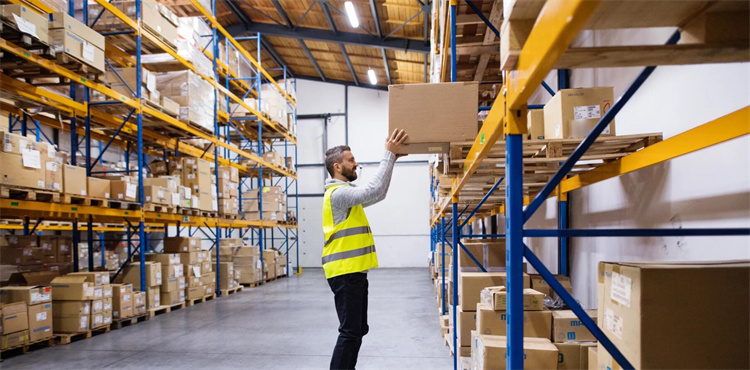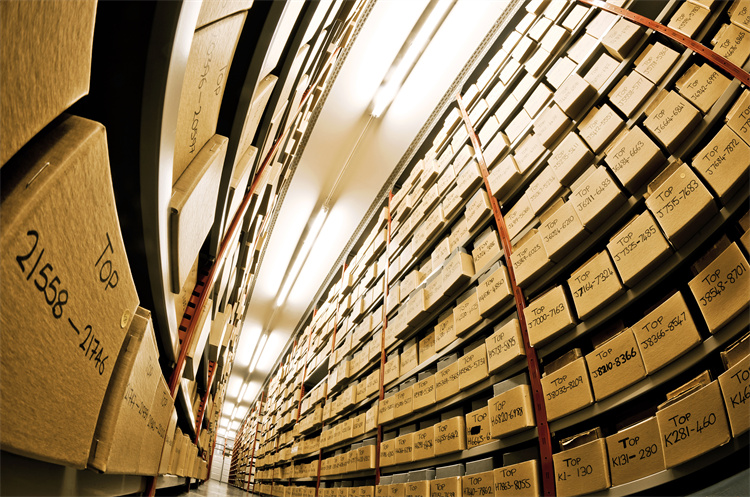Emerging Supply Chain Technology Trends Shaping 2025

Supply chain technology will redefine global trade in 2025. You will witness AI enhancing demand forecasting and risk management, while sustainability drives innovation through circular supply chains. Technologies like IoT and blockchain will improve visibility and efficiency. Adopting a robust supply chain platform ensures you stay competitive in this evolving landscape.
Key Takeaways
AI helps predict demand and manage inventory. This prevents too much or too little stock.
Being eco-friendly matters. Circular supply chains cut waste and protect the planet.
Blockchain makes supply chains clear and trustworthy. It keeps data real and lowers risks.
AI and Automation Driving Supply Chain Transformation

AI-Driven Demand Forecasting and Inventory Management
AI is revolutionizing demand forecasting and inventory management by providing unparalleled accuracy and efficiency. It processes vast amounts of data, including market trends and social media sentiment, to predict future demand patterns. This capability helps you avoid overstocking and stockouts, ensuring optimal inventory levels. AI also incorporates complex variables like weather patterns and competitor pricing into its forecasts, making it highly adaptable to market dynamics.
By leveraging machine learning and predictive analytics, AI identifies patterns in historical data, enabling precise demand forecasting. For example, a leading automotive manufacturer reduced inventory costs by 20% and improved on-time deliveries by 15% using AI-driven solutions. These tools also enhance customer service by ensuring product availability, which increases sales and loyalty. Additionally, AI minimizes waste and holding costs, optimizing your supply chain operations.
Autonomous Vehicles and Drones in Logistics
Autonomous vehicles and drones are transforming logistics by improving efficiency and reducing costs. Battery-powered autonomous vehicles eliminate driver fatigue, reduce accidents, and optimize routes for fuel savings. They also provide an eco-friendly solution by cutting carbon emissions. Drones, on the other hand, deliver items faster by bypassing traffic and reducing packing time. Their AI-driven navigation ensures accurate deliveries, enhancing customer satisfaction.
Benefit | Description |
|---|---|
Reduce Costs | Replaces human drivers, lowering labor costs and using battery power instead of gas. |
Operational Efficiency | Eliminates driver fatigue, reduces accidents, and optimizes routes for fuel savings. |
Eco-Friendly Solution | Battery-powered vehicles that do not emit carbon emissions. |
Improved Customer Experience | Provides tracking updates and faster delivery times, enhancing satisfaction. |
These technologies also expand the labor pool by enabling transportation for disabled individuals, further boosting workforce availability in logistics.
Robotic Process Automation (RPA) for Warehousing Efficiency
Robotic Process Automation (RPA) is enhancing warehousing efficiency by automating repetitive tasks. It streamlines operations such as inventory counting, order picking, and shipment tracking. For instance, SF Supply Chain implemented RPA to improve warehouse productivity significantly. This technology reduces manual errors, accelerates processes, and ensures consistent performance.
RPA also integrates seamlessly with other automation tools, creating a cohesive system for warehouse management. By adopting RPA, you can achieve faster turnaround times, lower operational costs, and improved accuracy in your supply chain.
Sustainability in Emerging Supply Chain Trends

Sustainability is no longer optional in supply chain management. It has become a critical driver of innovation and efficiency, offering opportunities to address supply chain challenges while enhancing environmental sustainability.
Carbon Tracking and Reduction Technologies
Reducing carbon emissions has become a priority in emerging supply chain trends. You can leverage advanced technologies to track and minimize your carbon footprint effectively. Key strategies include:
Optimizing transportation routes to reduce travel distances and fuel consumption.
Using IoT sensors and telematics to monitor vehicle performance and emissions in real time.
Prioritizing sustainable sourcing by collaborating with suppliers who have low emissions footprints.
Adopting lean manufacturing principles to eliminate waste and improve energy efficiency.
Implementing circular economy practices, such as reverse logistics, to design products for reuse and recycling.
These technologies not only reduce emissions but also improve visibility across your supply chain, helping you meet sustainability goals while addressing supply chain challenges.
Circular Supply Chain Models for Waste Minimization
Circular supply chains are transforming how businesses manage resources. By designing products for reuse, remanufacturing, and recycling, you can minimize waste and create new opportunities for cost savings. Circular supply chains also enhance visibility, allowing you to track materials throughout their lifecycle. For example, reverse logistics enables you to recover valuable materials from end-of-life products, reducing dependency on raw resources. This approach not only supports sustainability but also strengthens your resilience against supply chain challenges.
Renewable Energy Integration in Logistics Operations
Integrating renewable energy into logistics operations offers significant opportunities for sustainability. Advancements like hydrogen fuel cells and solar energy are powering logistics hubs and vehicles, reducing reliance on fossil fuels. Energy management systems (EMS) optimize energy consumption, while fleet management software ensures efficient use of electric and hydrogen-powered vehicles.
Advancement Type | Description |
|---|---|
Hydrogen Fuel Cells | Offer zero emissions and extended ranges suitable for heavy-duty logistics. |
Solar Energy | Increasingly adopted to power logistics hubs and vehicles, providing energy self-sufficiency. |
Energy Management Systems (EMS) | Enable real-time monitoring and optimization of energy consumption for renewable sources. |
Fleet Management Software | Specialized software for managing fleets powered by electric vehicles and hydrogen trucks. |
These innovations combat climate change, improve air quality, and conserve resources, making them essential for emerging supply chain trends.
Advanced Risk Management in Supply Chain Platforms
Predictive Analytics for Disruption Mitigation
Predictive analytics has become a cornerstone of supply chain risk management, enabling you to foresee and mitigate potential disruptions. By analyzing historical data and identifying patterns, it provides actionable insights that enhance agility and decision-making. For example, machine learning and data mining techniques help you predict risks and improve supplier performance management. This proactive approach ensures your supply chain remains resilient during unforeseen challenges.
Key features of predictive analytics tools include:
Key Feature | Description |
|---|---|
Real-time visibility | Helps proactively address potential delays, damages, or disruptions in the supply chain. |
Optimization of transportation routes | Identifies patterns and trends to guide decision-making for better route planning. |
Data management | Involves collecting, storing, and managing vast amounts of supply chain data for effective analysis. |
Forecasting methods | Utilizes various techniques such as time series analysis, regression analysis, and machine learning. |
Use cases like demand planning, inventory optimization, and supplier performance management demonstrate how predictive analytics drives industry transformation. By adopting these tools, you can reduce risks, improve efficiency, and maintain operational agility.
Blockchain for Transparency and Trust
Blockchain technology is revolutionizing supply chain risk management by enhancing transparency and trust. It creates a shared ledger that records transactions securely and immutably. This ensures the authenticity of information and fosters trust among stakeholders. For example, blockchain replaces fragmented tracking systems with interoperable solutions, reducing risks associated with unethical sourcing.
Evidence Description | Key Point |
|---|---|
Blockchain is a record of transaction data that relies on a shared ledger. | It provides a trusted and reliable way to record, validate, and view transactions among parties. |
Technologies like blockchain can help ensure the authenticity of information. | This enhances transparency during upstream transactions, fostering trust among stakeholders. |
Blockchain technology replaces fragmented tracking with an interoperable solution. | It reduces risks associated with unethical sourcing and improves overall supply chain integrity. |
By integrating blockchain, you can achieve greater visibility and accountability, which are essential for navigating today’s complex supply chains.
Real-Time Monitoring with IoT Integration
IoT integration offers unparalleled real-time monitoring capabilities, transforming how you manage supply chain risks. Sensors and connected devices provide real-time tracking of shipments, inventory, and equipment. This data enables you to predict issues, optimize inventory, and enhance demand forecasting.
Benefit | Description |
|---|---|
Enhanced Visibility and Tracking | Provides real-time tracking and automated data collection for optimizing processes and decision-making. |
Improved Efficiency and Productivity | Analyzes data to introduce operational improvements and automates processes like inventory management. |
Optimized Inventory Management | Monitors inventory levels in real time to prevent overstocking or stockouts. |
Enhanced Demand Forecasting | Gathers real-time data to make informed predictions about future demand. |
Reduced Costs and Risks | Predicts issues, streamlines inventory management, and reduces operational risks, enhancing cost efficiency. |
IoT integration not only improves operational efficiency but also strengthens your supply chain’s agility. By leveraging these technologies, you can stay ahead in an era of rapid industry transformation.
Data-Driven Decision-Making and Digital Twins
Big Data Analytics for Supply Chain Optimization
Big data analytics is transforming supply chain management by enabling you to make data-driven decisions that enhance efficiency and agility. By analyzing vast datasets, you can uncover patterns and trends that optimize operations across the supply chain.
Some key applications of big data analytics include:
Demand Forecasting and Inventory Management: Advanced algorithms analyze customer behavior, improving demand forecasting accuracy.
Supply Chain Visibility: Real-time data integration enhances collaboration and responsiveness to disruptions.
Transportation and Logistics: Route optimization and fleet management reduce costs and improve delivery efficiency.
Quality Control and Traceability: Monitoring product conditions ensures compliance and quality.
Sustainable Practices: Analytics support environmental assessments and supplier evaluations.
Companies like Amazon and Walmart exemplify the power of big data. Amazon strategically places products in fulfillment centers to minimize delivery times, while Walmart reduces stockouts and enhances customer satisfaction through analytics. These examples highlight how big data drives supply chain optimisation and operational efficiency.
Digital Twins for Scenario Planning and Risk Assessment
Digital twins offer a revolutionary way to simulate and manage supply chain risks. By creating virtual replicas of physical supply chain processes, you gain real-time visibility and predictive insights. This technology allows you to test various scenarios and identify critical risks before they occur.
Benefit | Description |
|---|---|
Tracks resources and operations to detect potential issues early. | |
Predictive analytics | Forecasts disruptions like equipment failures or supply shortages. |
Scenario simulation | Tests risk-reduction strategies to evaluate their effectiveness. |
Operational efficiency | Identifies inefficiencies, reduces costs, and strengthens resilience. |
Disaster preparedness | Simulates emergencies to develop robust contingency plans. |
By leveraging digital twins, you can create an agile supply chain that adapts to disruptions while maintaining stability.
Cloud-Based Collaboration Platforms like JusLink
Cloud-based platforms like JusLink are redefining supply chain management by fostering real-time collaboration and enhancing visibility. These platforms provide scalability, cost efficiency, and sustainability, making them indispensable for modern supply chains.
Key advantages of cloud-based platforms include:
Scalability: Adapt resources to meet changing market demands.
Enhanced visibility: Monitor inventory levels and operations from anywhere.
Real-time collaboration: Improve coordination among supply chain partners.
Cost efficiency: Reduce infrastructure costs by eliminating the need for on-site hardware.
Improved accuracy: Analyze large datasets to generate precise demand forecasts.
JusLink exemplifies innovation in this space. Its AI-driven tools and real-time monitoring capabilities empower you to build an agile supply chain that meets the demands of a dynamic market.
Emerging Technologies in Supply Chain Platforms
Internet of Things (IoT) for Real-Time Tracking
The Internet of Things (IoT) acts as the eyes and ears of your supply chain, offering real-time tracking and automated data collection. This technology enables you to monitor product locations, movements, and conditions, ensuring compliance with internal policies and external regulations. For instance, IoT sensors can track cargo conditions like temperature and humidity, which is critical for cold chain management.
Key benefits of IoT include:
Monitoring environmental conditions to prevent damage during transit.
Optimizing delivery routes using real-time location data, improving fleet efficiency.
Detecting tampering or unauthorized access with alerts for unexpected stops.
Enhancing predictive analytics to forecast delays or potential equipment failures.
Companies like Amazon and Volvo have already embraced IoT to streamline warehouse operations and track vehicle components globally. By integrating IoT, you can improve decision-making and enhance overall supply chain performance.
5G Connectivity for Faster Communication
5G connectivity revolutionizes communication within supply chains by delivering faster data transfer speeds and low latency. This technology supports advanced tools like augmented reality (AR) and virtual reality (VR), which can transform your operations. AR applications assist in inventory management by providing real-time data, while VR optimizes warehouse layouts and trains staff efficiently.
Additional benefits include:
Enhanced automation through the combination of 5G and edge computing.
Faster decision-making due to improved communication between devices.
Reduced errors and delays in locating items within warehouses.
With 5G, you can achieve seamless communication and operational efficiency across your supply chain.
Edge Computing for Decentralized Data Processing
Edge computing processes data near its source, reducing latency and improving efficiency. This approach is ideal for time-sensitive applications, offering real-time insights that enhance operational decision-making. By minimizing data transmission, edge computing also strengthens data security and privacy.
Feature | Description |
|---|---|
IoT Enablement | Supports numerous IoT devices, enhancing connectivity and data collection. |
Analytics Insights | Processes data at the edge for faster decision-making. |
Edge Security | Reduces vulnerabilities by securing data closer to its source. |
Cost Savings | Lowers bandwidth needs and server resource requirements. |
Edge computing allows you to scale operations cost-effectively while maintaining high performance. By integrating this technology, you can create a more agile and secure supply chain ecosystem.
JUSDA’s Role in Emerging Supply Chain Trends
JusLink: A Comprehensive Supply Chain Platform
JusLink stands out as a cutting-edge supply chain platform designed to address the complexities of modern logistics. It integrates advanced technologies like AI, IoT, and cloud computing to provide real-time visibility and seamless collaboration. By leveraging JusLink, you can optimize inventory management, streamline procurement, and enhance delivery efficiency. Its microservices architecture allows you to customize features based on your unique business needs, ensuring flexibility and scalability.
This platform also excels in risk management. Its intelligent control towers monitor supply chain risks in real time, enabling you to respond swiftly to disruptions. JusLink’s automated tools further enhance operational efficiency by tracking shipments and detecting anomalies. These capabilities make it an indispensable tool for businesses navigating today’s dynamic logistics technology landscape.
Industry-Specific Solutions for Diverse Sectors
JUSDA offers tailored solutions for various industries, ensuring that each sector’s unique challenges are addressed effectively. Here’s how JUSDA’s supply chain platform supports different industries:
Industry | Description |
|---|---|
Apparel | Tailored solutions for clothing and fashion. |
Consumer Packaged Goods | Optimized supply chains for everyday products. |
Durable Goods | Solutions for long-lasting products. |
Food and Beverage | Specialized logistics for food safety and quality. |
Life Sciences | Compliance-focused supply chains for healthcare. |
Process Manufacturing | Efficient processes for manufacturing industries. |
Electronics and High-Tech | Advanced solutions for tech products. |
Retail | Streamlined operations for retail businesses. |
Service Parts | Efficient management of spare parts. |
Wholesale Distribution | Solutions for bulk product distribution. |
These industry-specific solutions demonstrate JUSDA’s commitment to addressing diverse logistics needs while maintaining efficiency and reliability.
Leveraging AI and Blockchain for Global Supply Chain Transformation
AI and blockchain technologies are revolutionizing global supply chains. AI enhances decision-making by analyzing vast datasets, enabling you to predict demand and optimize operations. Automation powered by AI improves efficiency, while advanced risk management tools ensure sustainable growth. Blockchain, on the other hand, provides an immutable ledger that secures data authenticity. This technology streamlines procurement, reduces lead times, and strengthens supplier relationships.
Adopting these technologies offers several benefits:
Enhanced agility and resilience in supply chains.
Improved operational efficiency through automation and data insights.
Increased transparency and real-time visibility.
Rapid response to disruptions and effective issue diagnosis.
By integrating AI and blockchain into your logistics technology strategy, you can build a robust and future-ready supply chain platform.

JUSDA Solutions
To provide you with professional solutions and quotations.
The supply chain landscape in 2025 will be defined by transformative trends like AI-driven automation, sustainability initiatives, and advanced risk management. These innovations enhance supply chain resilience, mitigate supply chain disruptions, and improve real-time supply chain visibility. Platforms like JusLink empower businesses with real-time visibility and tools to adapt to evolving challenges. Embrace these technologies to build resilience and secure a competitive edge.
See Also
Five Key Trends Shaping Future Supply Chain Efficiency
Get Prepared: Discovering New Transport Technologies for Supply Chains
The Transformation of Industries Through Cloud Supply Chain Solutions
Sustainability Insights: Robotics Trends in Supply Chain Management
Discover Five Cutting-Edge Techniques for Supply Chain Optimization
